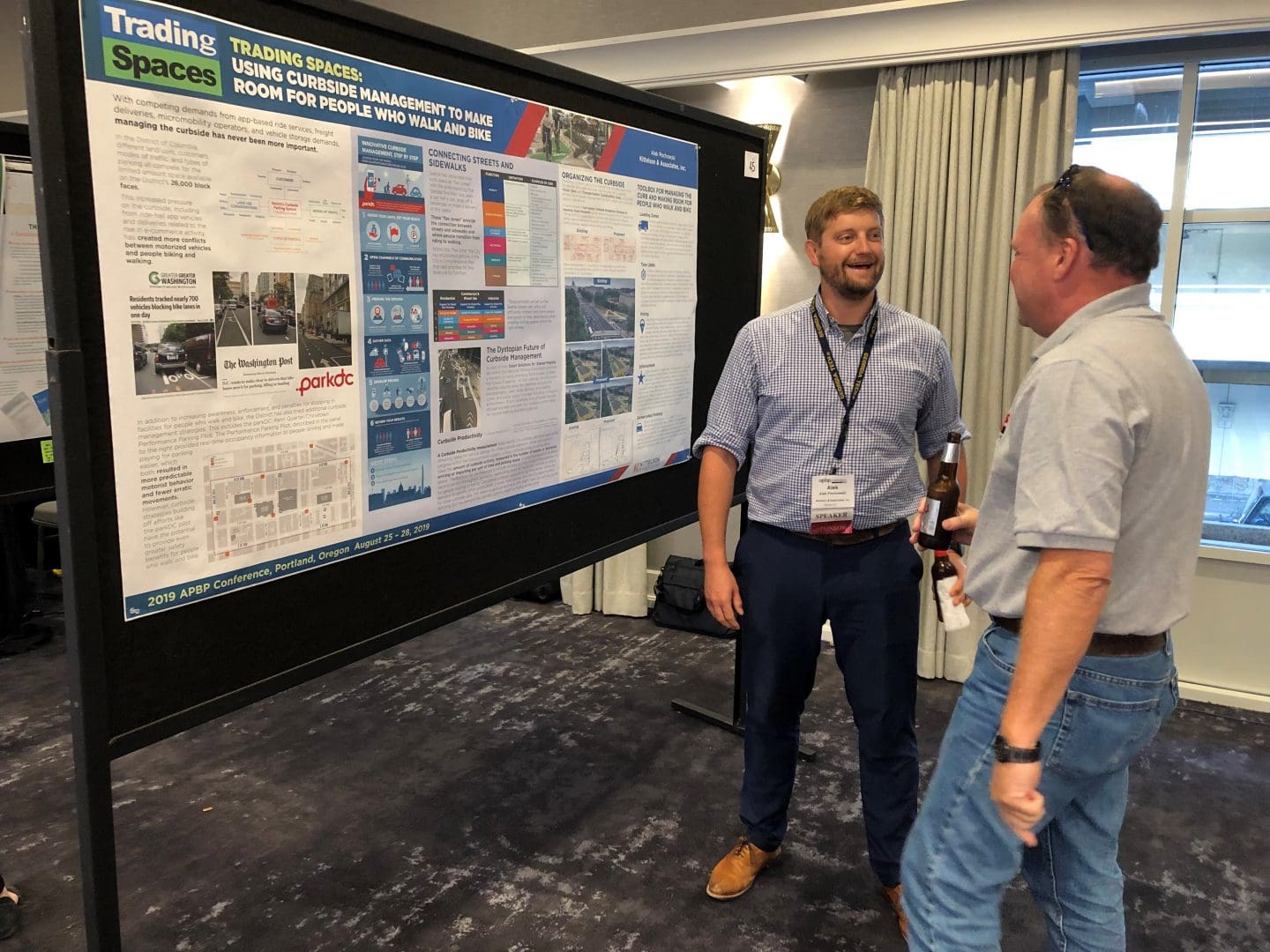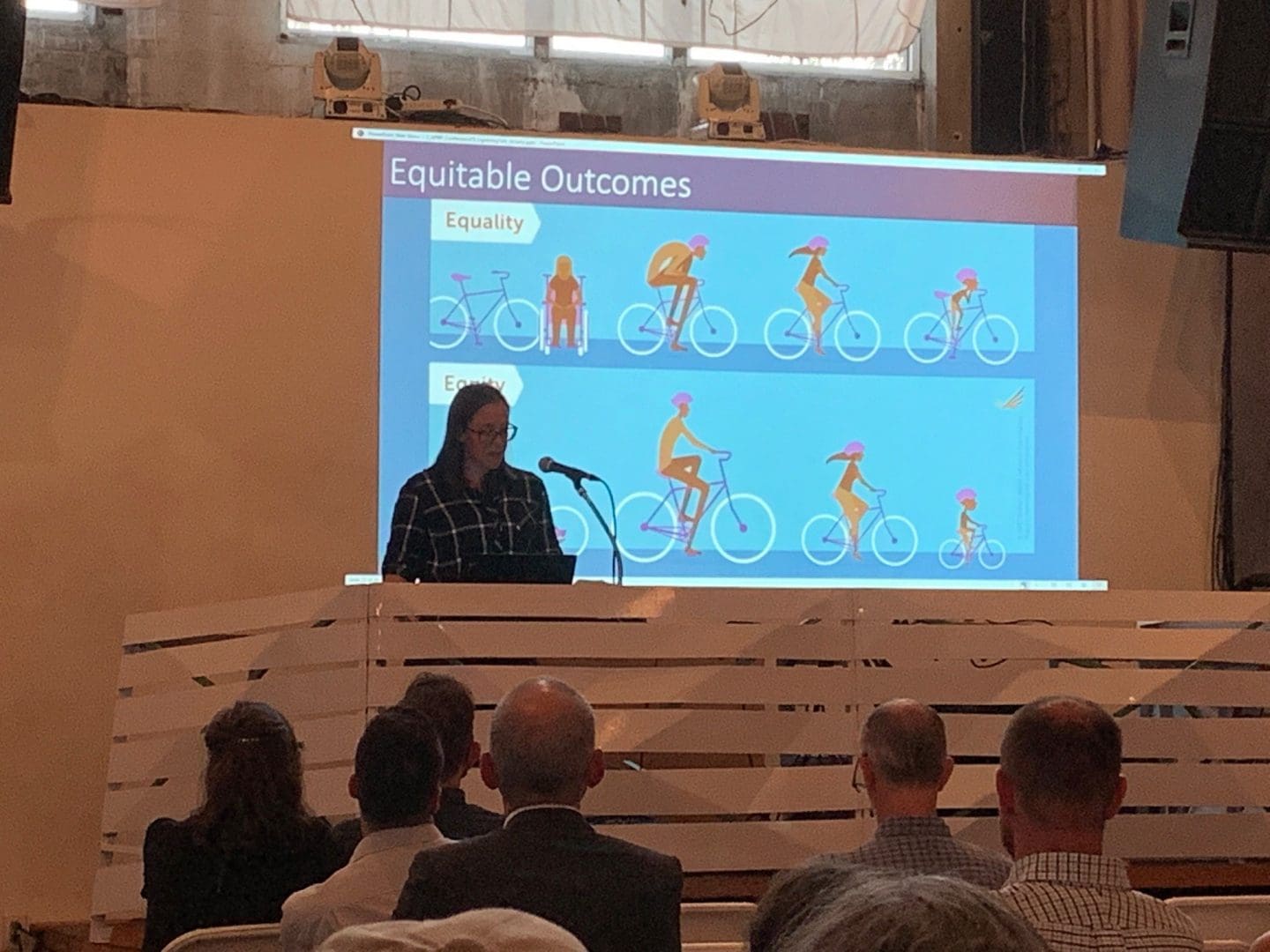September 11, 2019
The Association of Pedestrian and Bicycle Professionals (APBP) 2019 Conference took place from August 25-28 in Portland, Oregon. Ten Kittelson staff members – representing our Portland, Boston, Oakland, Philadelphia, Boise, and Washington, D.C. offices – attended APBP 2019 to hear new insights into safety and equity for people walking and biking, and to share a few of our own recent projects and research topics.
Straight from the notebooks of our staff, here are a few ideas we found particularly noteworthy from APBP sessions.
The Intersection of Active Transportation with Climate Change, Social Equity, and Health
The relationship among active transportation, climate change, social equity, and health is increasingly clear and there is a growing emphasis on transportation equity and inclusion within our profession. Benefits of active transportation can coincide with efforts to reduce greenhouse gas emissions, improve health outcomes, and increase opportunity for low-income communities and communities of color.
Agencies are making efforts to prioritize investment in historically under-invested areas and developing strategies to combat the higher rates of traffic related injuries and fatalities experienced by low-income communities and communities of color; disparities in physical environment for walking and biking in these communities; and other factors that can negatively affect the experiences of people living in these communities. Understanding the lived experiences of people using these facilities can better inform more equitable design.
— Amanda Leahy and Camilla Dartnell
Sustainable Safety
Vision Zero was present at every APBP session. In addition, someone showed a graph related to bicycle and pedestrian fatalities and declared it unacceptable in each session we attended. The increasing share of fatalities represented by people walking and biking is not going unnoticed.
Instead of being reactive and trying to “chase” crashes, agencies are now developing a proactive approach to safety to systematically identify and address top risk factors. More agencies are willing to try new treatments to address their safety issues even if these treatments may not be found in the MUTCD or other adopted guidance. Agencies have noticed some of the limitations of existing guidance for non-motorized users and are trying to develop innovative solutions to improve safety for people walking and biking.
— Burak Cesme, Nick Foster, and Alek Pochowski
Research and Funding Gaps
Several APBP sessions highlighted the importance of research in the work that we do. Data are crucial to make an evidence-based case for active transportation. National surveys and counting tools can provide essential information about user habits and experiences. New technologies are providing this information more efficiently than ever. However, there continue to be research gaps and unanswered questions that need further explanation. APBP acknowledges and elevates researchers through a new awards category, “Research Professional of the Year.”
In addition, despite demonstrated need, there continue to be funding gaps for planning and implementing active transportation projects, as well as for the public participation and community engagement needed to gain support for project delivery. Quick-build low-cost treatments are gaining traction and creative financing of projects (e.g., through public-private partnerships) is becoming increasingly common.
— Amanda Leahy
Connectivity in a Bike Network
A key takeaway from the panel on Bike Network Evaluation: Low Stress Bike Accessibility & Connectivity was the emphasis of connectivity. While that may sound simple, it is common practice to conduct LTS analyses to determine which segments are high stress and then provide a solution to address the need of the segment. Peter Furth emphasized the importance on marrying the two: LTS + Connectivity to evaluate bicycle networks.
The bigger takeaway for me was the relation between LTS and one-way streets. While we don’t have a lot of one-way streets in Portland (outside of the downtown area), Boston does. When working in one-way street communities it is important to conduct LTS analyses thinking about both directions traveled (trips). If you can make a trip to the grocery store that requires travel on a LTS 2 one-way streets but requires a different route home on an LTS 3 one-way street, the trip should be summarized as an LTS 3.
Overcoming Implicit Biases
Several talks at APBP brought up the implicit biases in our brains that keep us from making good decisions about our transportation choices (and many other things) and discussed ways to better present concepts and programs to get public buy-in. As professionals, we so often present the public with a laundry list of reasons why our ideas are the right choice, and our brains are not wired to change behaviors based on that rational approach.
Feel free to reach out to any of us to discuss these takeaways further, or to share what stood out to you from APBP 2019!

Alek Pochowski at APBP 2019

Amanda Leahy at APBP 2019
